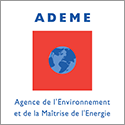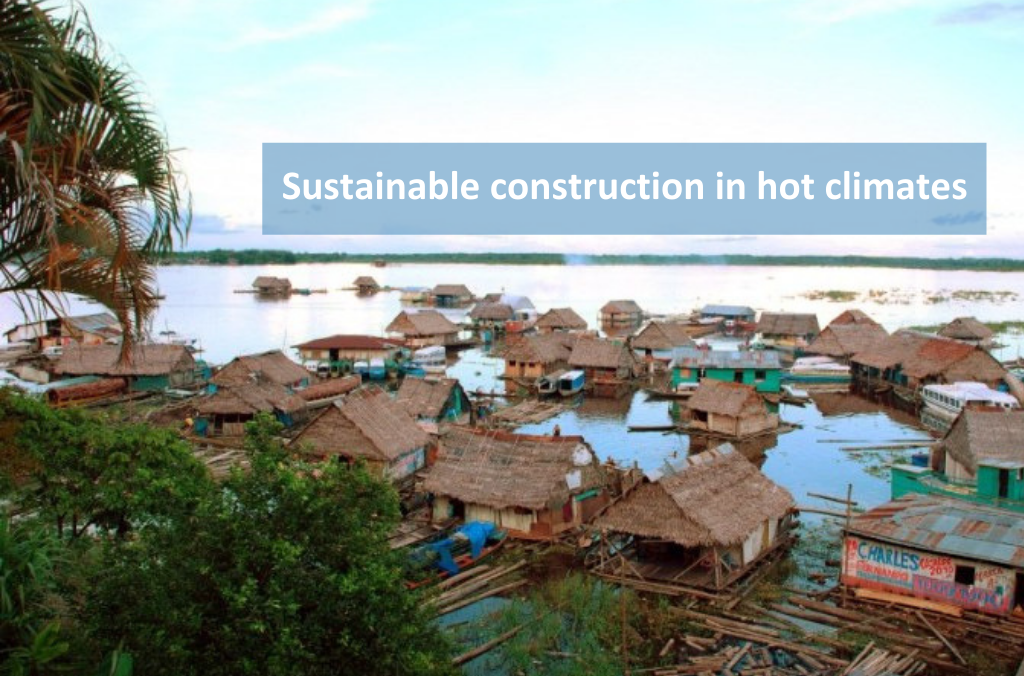#23 Rehabilitation in French Guiana: Feedback from the REX system AQC high-performance buildings
Equipe AQC
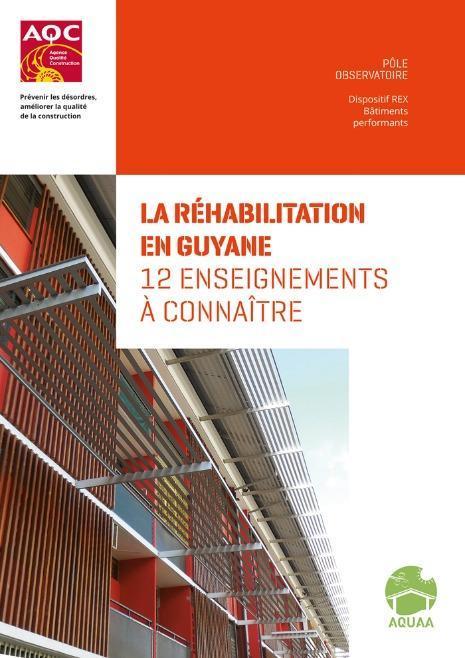
Since 2010, the Construction Quality Agency (AQC) has been supporting the construction industry by identifying emerging risks in so-called high-performance buildings through the BP REX system. This system highlights the points of vigilance and good practices observed in the field in reports that can be downloaded online (the "12 lessons to know" collection).
Based on examples from the field, the AQC's "Rehabilitation in French Guiana" report (downloadable here, in french) aims to warn of constructive defects in order to prevent them and to disseminate good practices. The aim is to improve the energy performance of future projects, guarantee user comfort and ensure the durability of equipment.
The performance of rehabilitation projects is an unavoidable subject in French Guiana for the following reasons:
- The rapid development of the housing stock has matched the doubling of the population in 22 years. A major wave of rehabilitation is thus expected over the next few years.
- Demographic pressure has led to a sustained rate of housing construction, particularly in emergency situations, which has had a negative impact on the construction quality and performance of the works initially carried out. Rehabilitations thus offer an opportunity all the more interesting to improve the quality and the global cost of the works.
- French Guiana's humid equatorial climate (strong sunshine, high rainfall, high humidity) contributes to the accelerated ageing of building materials, requires particular attention to runoff water and directs the choice of treatment for the thermal comfort of occupants towards natural ventilation and/or air conditioning.
Several elements are decisive for the quality, durability and performance of a rehabilitation. They can be classified in 4 main families:
The location of the building in its environment.
It conditions its ability to capture wind, its exposure to rain, sunshine or ambient noise, the way in which rainwater and run-off water affect it, etc... The analysis of the climatic elements and the assets and constraints of the site is fundamental and must be carried out as soon as a rehabilitation project is planned.
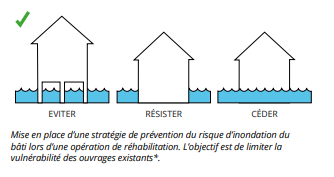
Rehabilitation represents an opportunity to address the problems of recurrent flooding in certain buildings that were poorly designed or whose environment was not sufficiently taken into account during their initial design.
Uses: will the building be used as housing or as a workplace? How will thermal comfort be sought? Through natural ventilation? By air conditioning? Both? What are the occupants' experiences?
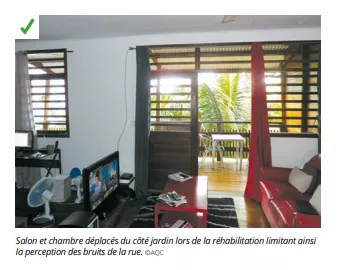
Rehabilitation is an opportunity to reorganize poorly designed interior spaces to improve the thermal and acoustic comfort of the occupants.
The architecture: which implementation details need to be well defined? How to combine the aesthetics of the building with technical and environmental constraints? How to correct the observed non-qualities?
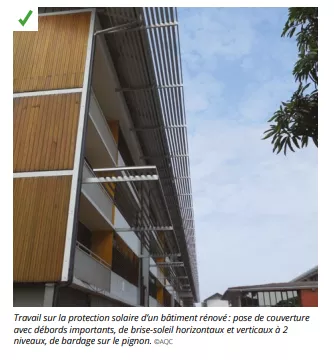
Rehabilitation makes it possible to make up for the absence or insufficiency of solar protection while improving the aesthetics of the façades. Users are thus winners in several ways.
The equipment: what technical solutions can be provided to the residual needs or problems not solved by passive principles? How to choose and implement technical solutions properly?

Rehabilitation represents the opportunity to solve the problems of design and implementation of equipment.
Demographic pressure combined with the economic stakes in French Guiana can lead to the avoidance of the analysis and reflection phases to be carried out upstream of the project, as well as to the failure to respect the construction process in accordance with the rules of the trade. However, these elements are essential to the viability and sustainability of a project and can otherwise have a severe impact on the overall cost of the building.
The challenge of each rehabilitation is therefore to correct the risks observed on the existing building while ensuring that the building is adapted to its environment, to the use of the occupants and to their respective evolutions.
Download the full report for free (in French)!
This report is part of the "12 lessons to know" collection of the Construction Quality Agency, part of which is dedicated to the French overseas departments and territories:
- Natural ventilation in Reunion Island (to download here in French);
- Efficient buildings in the West Indies (to be published);
- Humidity in buildings in Reunion Island (to be published);
- La construction bois à la Réunion (to be published).
About the REX BP Scheme :
In order to facilitate the development of skills among players in the construction sector, the Construction Quality Agency (AQC) has set up a tool in 2010 to capitalise on and make the most of feedback: the Efficient Buildings REX Scheme. The aim of this system is to improve the quality of construction. In concrete terms, it consists of identifying and understanding emerging risks based on on-site audits of pioneering buildings that go beyond current energy efficiency and environmental quality standards.
More information on rexbp.qualiteconstruction.com
Find the original article in French
Read our previous article : #22 Diamniado's Ecopavilion




